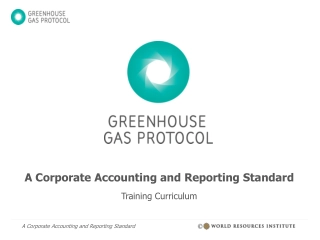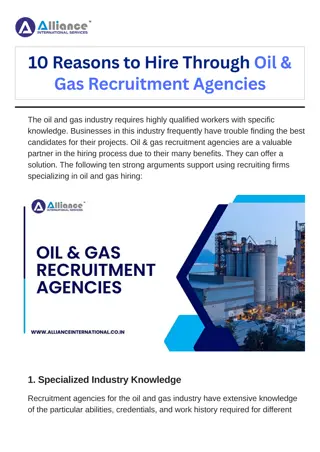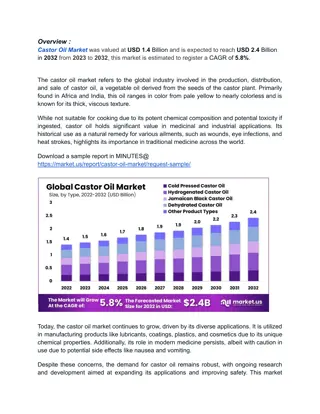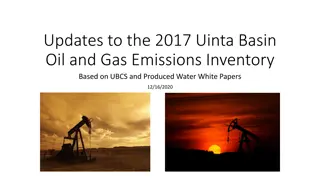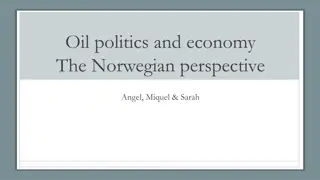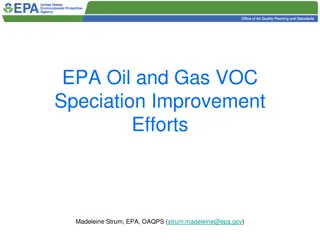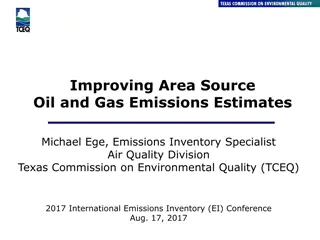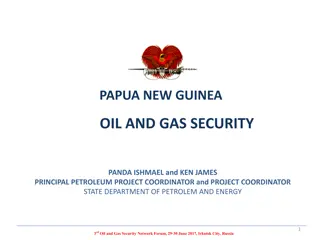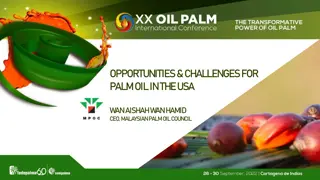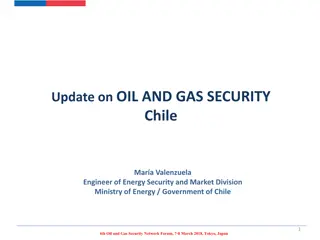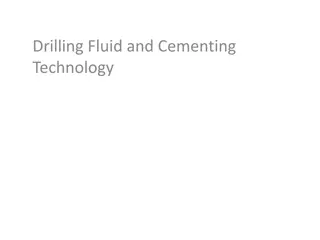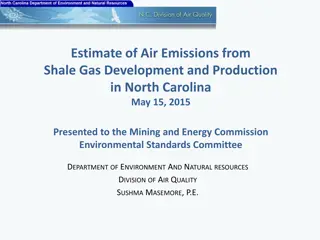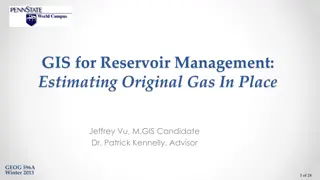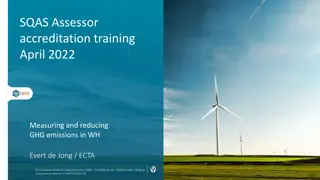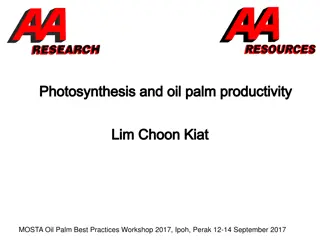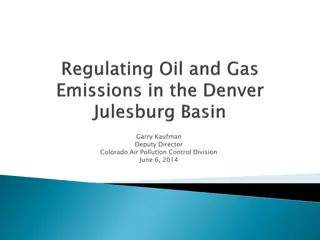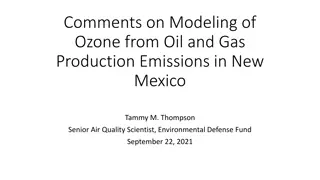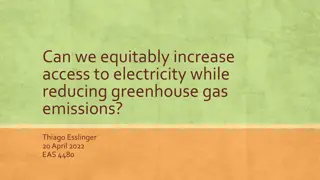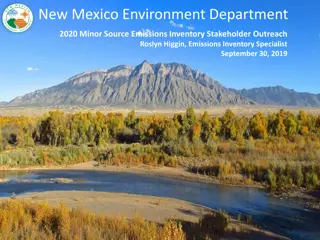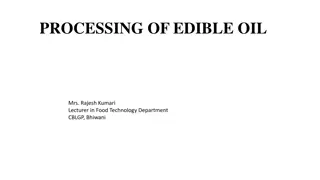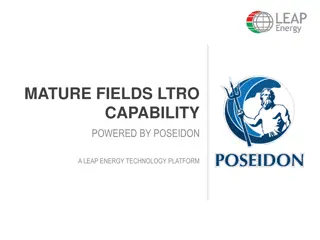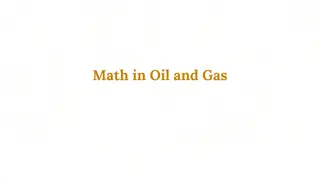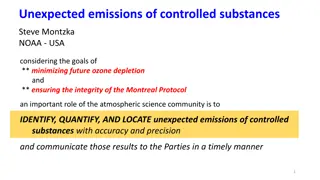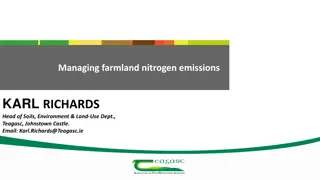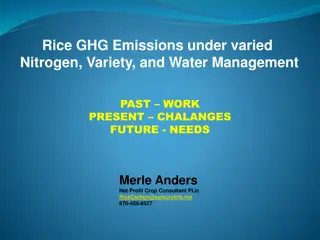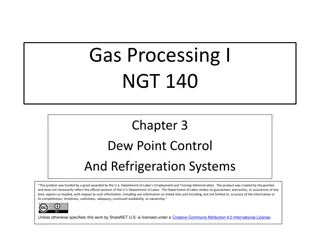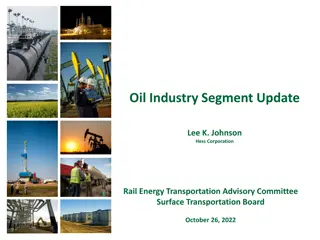A Corporate Accounting And Reporting Standard
Principles and guidelines for preparing GHG emissions inventories, focusing on organizational boundaries, operational boundaries, tracking emissions over time, calculating emissions, and reporting GHG emissions. It emphasizes relevance, completeness, consistency, transparency, and accuracy in accoun
1 views • 14 slides
A Corporate Accounting and Reporting Standard
This training curriculum covers principles of GHG accounting, organizational boundaries, setting operational boundaries, tracking emissions over time, calculating emissions, and reporting GHG emissions. It emphasizes the importance of determining which company operations and emissions sources to inc
2 views • 25 slides
Buy Kitchen Plastic Cooking Manual Hand Oil Pump (Multicolor,Pack Of 1)
Effortless Cooking Elegance: Manual Hand Oil Pump\nSimplify Your Culinary Adventures with the Kitchen Plastic Cooking Oil Pump\nIntroducing the Manual Hand Oil Pump, a versatile and efficient kitchen companion that adds a touch of elegance to your cooking routine. Crafted from durable plastic, this
0 views • 3 slides
Understanding Consumption-Based Emissions Inventories in Boulder County
Consumption-Based Emissions Inventories (CBEIs) play a crucial role in assessing greenhouse gas emissions linked to local consumption patterns. By calculating emissions associated with products and services used by a community, CBEIs reveal significant gaps in traditional emissions tracking, emphasi
2 views • 13 slides
10 Reasons to Hire Through Oil & Gas Recruitment Agencies
Struggling to find top talent in the competitive Oil & Gas industry? Discover 10 reasons why partnering with Oil & Gas Recruitment Agencies is your key to success. Learn how they unlock wider talent pools, reduce costs, and streamline your hiring process. Attract the best & brightest minds for your
0 views • 4 slides
The Best Odie's Natural Oil for Enhancing Wood Furniture Beauty
Wood furniture has a timeless appeal, adding warmth and elegance to any space. To maintain and enhance its beauty, using the right oil finish is crucial. Among the various products available, Odie\u2019s Natural Oil stands out as one of the best natural oils for wood furniture. This blog will delve
1 views • 4 slides
Energy Balance and Greenhouse Gas Emissions in Agriculture
This study explores the energy balance and greenhouse gas emissions in kiwi and citrus farms in Greece, highlighting the significant impact of agriculture on global energy consumption and climate change. It discusses the distribution of energy consumption in agri-food chains, shares of energy in pro
6 views • 17 slides
Updates on Oil & Gas NAICS Codes and Classification Guidelines
The National Oil and Gas Emissions Committee discusses the recent changes in NAICS codes for the oil and gas industry, including the breakdown of Crude Petroleum and Natural Gas Extraction codes. The U.S. Census Bureau provides guidance on assigning NAICS codes based on the primary economic activity
0 views • 12 slides
Government and Industry Investments Propel Castor Oil Market Forward Despite Sup
Castor Oil Market By Product Type (Cold Pressed Castor Oil, Hydrogenated Castor Oil, Jamaican Black Castor Oil, Dehydrated Castor Oil), By Application (Pharmaceuticals, Lubricants, Food And Beverages, biofuel, Paints and Varnishes, Animal feed), By D
0 views • 4 slides
Oil Palm Cultivation and Uses in India: A Comprehensive Overview
Oil palm cultivation in India, particularly in the Oilseeds Division of DAC&FW, is detailed, covering economic aspects, requirements for success, different uses of palm oil, global cultivation statistics, and production trends in major countries. The potential benefits of oil palm cultivation, such
0 views • 31 slides
Improvements in Oil and Gas Emission Inventory: Uinta Basin Updates
Uinta Basin's oil and gas emission inventory has seen significant updates in 2017, focusing on improving accuracy through area-specific data collection and enhanced modeling techniques. The discrepancy between top-down and bottom-up emissions measurements has been addressed, leading to better air qu
0 views • 14 slides
Best Gas Dryer Services in Bickford Park
If you want the Best Gas Dryer Services in Bickford Park, visit AG Gas Solutions. They specialize in a wide range of services including gas stove repair, gas ranges, gas ovens, gas dryers, gas BBQs, gas pizza ovens, gas fire pits, pool heaters, dryer
1 views • 6 slides
Oil Industry Segment Update and Production Trends Overview
The oil industry segment is experiencing fluctuations in production and prices, as indicated by recent data on WTI and Brent prices, US crude oil production, tight crude oil production, Williston Basin crude oil production, US land rig count for oil, and total US and Canada CBR. The updates highligh
2 views • 9 slides
The Norwegian Perspective on Oil, Politics, and Economy
Exploring the Norwegian perspective on oil, politics, and economy reveals insights into state organization, licensing systems, the oil fund, and economic impacts of the oil industry. Comparisons with other countries like Canada highlight contrasting approaches to oil management. The history of oil p
0 views • 11 slides
Lean Oil Absorption Process in Gas Processing
The Lean Oil Absorption process in gas processing involves using hydrocarbon-rich lean oil to absorb heavier hydrocarbons from natural gas, allowing for increased gas condensate recovery. This method is a cost-effective way to separate different products in natural gas, alongside refrigeration proce
1 views • 14 slides
EPA Oil and Gas VOC Speciation Improvement Efforts
EPA's VOC Speciation transforms inventory species into Air Quality model species to support chemistry, ozone, and aerosol chemistry. The Speciate4.5 update in 2016 added oil and gas profiles, including location-specific uncontrolled profiles and WRAP profiles for various basins. The Uinta TMSR profi
2 views • 10 slides
Enhancing Oil and Gas Emissions Estimates for Area Sources
This presentation by Michael Ege, an Emissions Inventory Specialist at the Texas Commission on Environmental Quality (TCEQ), focuses on improving area source oil and gas emissions estimates. It covers the methods used to estimate emissions, including the development of basin-specific equipment profi
0 views • 31 slides
Papua New Guinea Oil and Gas Industry Overview
Papua New Guinea (PNG) is a significant player in the oil and gas industry, with production of crude oil and LNG. The country's oil production began in 1991, while LNG production commenced in 2014. PNG has refining capabilities and both exports and imports petroleum products. The country has notable
1 views • 12 slides
Opportunities and Challenges for Palm Oil in the USA: Insights from Malaysian Palm Oil Council CEO
Explore the evolving landscape of palm oil in the USA through a presentation by Wan Aishah Wan Hamid, CEO of the Malaysian Palm Oil Council. Discover strategic approaches, market insights, and the global dynamics influencing palm oil production and consumption. Gain a deeper understanding of project
0 views • 32 slides
Oil and Gas Security in Chile: Trends and Challenges
Chile's oil and gas security landscape, discussed by Mar a Valenzuela at the 4th Oil and Gas Security Network Forum in Tokyo, addresses the country's primary energy supply, crude oil production and imports, refinery production, natural gas demand, and the impact of natural disasters on energy sourci
1 views • 11 slides
Understanding Drilling Fluid and Cementing Technology in Oil & Gas Drilling
Explore the essential components of oil and gas drilling, including the rotary drill bit, drilling mud, drill string, well casing, derrick/platform, striking oil process, and blowout preventer. Learn about the techniques and equipment used in the drilling process to extract oil and gas efficiently.
0 views • 9 slides
Overview of Air Emissions and Quality Assessment in Shale Gas Development
The presentation discusses the estimation of air emissions from shale gas development and production in North Carolina, highlighting the importance of analyzing emissions from oil and gas activities and associated truck traffic. The process involves building emissions inventory, photochemical modeli
0 views • 22 slides
Estimating Original Gas In Place for Reservoir Management
This study focuses on utilizing GIS technology to estimate Original Gas In Place (OGIP) for reservoir management, with the aim of enhancing oil and gas production, reducing risks, and optimizing recovery. The project outlines the background of reservoir management, introduces the process of volumetr
0 views • 24 slides
Sustainable Conversion of Flare Gas into High-Value Carbon Nano-products
This project focuses on modular processing of flare gas to produce carbon nano-products, aiming to address the challenges of natural gas flaring in the United States. With a three-year timeline and a total budget of $3,750,000, the interdisciplinary team led by the University of Colorado Boulder see
0 views • 36 slides
Greenhouse Gas Emissions Management in Warehouse Operations
The SQAS Assessor accreditation training in April 2022 focused on measuring and reducing greenhouse gas emissions in warehouse operations. The content covers emission questions, scope of emissions, energy consumption examples, disaggregation of emissions, emission intensity calculation, and strategi
0 views • 17 slides
Gas Detection of Hydrogen/Natural Gas Blends in the Gas Industry
Gas detection instruments play a crucial role in assessing the presence of hazardous atmospheres in the gas industry. This study focuses on the impact of adding hydrogen up to 20% in natural gas blends on gas detection instruments. The aim is to understand any potential inaccuracies in readings and
0 views • 30 slides
Factors Affecting Photosynthetic Efficiency in Oil Palm Plantation
All green plants, including oil palm, rely on photosynthesis to convert carbon dioxide and water into carbohydrates using solar radiation. Key factors influencing oil palm productivity include solar radiation availability, radiation absorption by the canopy, conversion efficiency, dry matter partiti
0 views • 20 slides
Strategies for Oil and Gas Emission Reduction in Colorado
Garry Kaufman, Deputy Director of the Colorado Air Pollution Control Division, outlines efforts to reduce air pollution from oil and gas emissions, focusing on past initiatives, ozone standards, and methane reduction strategies. The historical context sheds light on the evolution of regulations and
0 views • 25 slides
Modeling the Impact of Oil and Gas Emissions on Ozone in New Mexico
Tammy M. Thompson, a Senior Air Quality Scientist at the Environmental Defense Fund, discusses the modeling of ozone from oil and gas production emissions in New Mexico. The analysis focuses on areas with high ozone concentrations and their overlap with oil and gas regions, highlighting the sensitiv
0 views • 8 slides
Analyzing Access to Electricity and Greenhouse Gas Emissions Relationship
Through correlational analysis of access to electricity, electricity production from fossil fuels, electricity production from renewable sources, and greenhouse gas emissions across different countries, we aim to determine if there is a trend that allows for an equitable increase in electricity acce
0 views • 16 slides
Understanding Emissions Inventory for Air Quality Management
Emissions inventory plays a crucial role in monitoring air pollutant discharges and assessing air quality. This article discusses the purpose of emissions inventory, distinguishing between actual and permitted emissions, and provides guidelines for preparing and reporting minor source emissions inve
0 views • 15 slides
Understanding the Processing of Edible Oil: A Comprehensive Overview
Crude vegetable oil undergoes a refining process before becoming suitable for consumption. This process involves removal of impurities and chemical treatments to ensure high-quality edible oil. Various manufacturing steps are followed to produce refined edible oil, including super cleaning, conto-bl
0 views • 21 slides
Innovative Solutions for Mature Oil and Gas Fields Powered by Poseidon Technology
Poseidon, a leap energy technology platform, offers modules designed for complex, high well count mature oil and gas fields. Its LTRO workflow provides a cost-effective solution for identifying remaining oil in wells with long production histories and multiple zones. By using compliant mapping metho
0 views • 31 slides
Understanding Key Factors in Oil and Gas Industry
Explore essential concepts in the oil and gas sector such as oil volume at surface conditions, gas volume at standard conditions, porosity measurement, water saturation, and formation volume factor. Learn how to calculate stock tank oil volume, gas in place, and interpret crucial parameters for rese
0 views • 12 slides
Monitoring Unexpected Emissions of Controlled Substances for Ozone Protection
The atmospheric science community plays a crucial role in identifying, quantifying, and communicating unexpected emissions of controlled substances to support the goals of minimizing future ozone depletion and upholding the Montreal Protocol. By comparing observation-based estimates of global emissi
0 views • 13 slides
Managing Farmland Nitrogen Emissions: Strategies and Research Updates
Soils play a crucial role in greenhouse gas emissions and carbon sequestration. Karl Richards, Head of Soils, Environment & Land-Use Department at Teagasc, discusses the importance of managing farmland nitrogen emissions through various practices. Research focuses on reducing emissions and enhancing
0 views • 8 slides
Rice GHG Emissions under Varied Nitrogen, Variety, and Water Management Study in Arkansas
Detailed study on rice greenhouse gas emissions under varied nitrogen, variety, and water management treatments, focusing on nitrogen fertility, crop varieties, and water usage impact on methane and nitrous oxide emissions. Research examines optimal nitrogen rates for reduced global warming potentia
1 views • 18 slides
Gas Processing: Dew Point Control and Refrigeration Systems
Gas processing involves gathering raw gas from wells, passing it through various units like feed gas receiving, condensate stabilization, gas treating, dew point control, and refrigeration units to control liquid condensation and recover natural gas liquids. Dew point control helps prevent condensat
0 views • 26 slides
Gas Laws Review Game - Test Your Knowledge on Gas Concepts and Mixed Gas Laws
Get ready to test your knowledge on gas concepts and mixed gas laws with this interactive review game. Answer questions on gas properties, volume changes, pressure variations, and more. Challenge yourself and your team members as you solve problems related to gas laws. Improve your understanding and
0 views • 7 slides
Oil Industry Segment Update and Global Trends Analysis
This update provides insights into the oil industry segment, focusing on global production and consumption trends, US refinery input, crude oil imports and exports, oil land rig count, and North Dakota production modal share. The data includes key statistics, such as top global crude oil producers,
0 views • 9 slides

